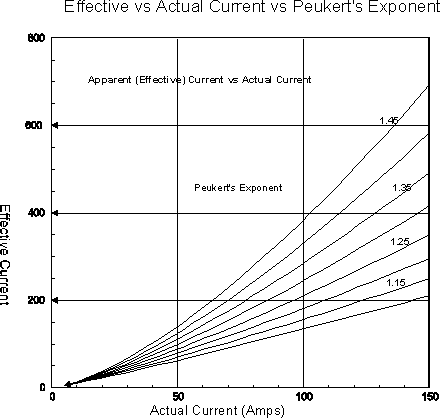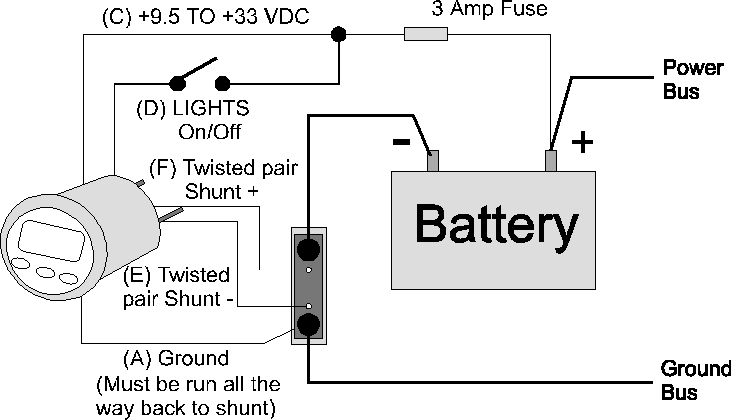






|
CruzPro VAH-30/VAH-35 Amp-Hour Monitors Take Out the Guesswork
Most people are aware that their batteries should be sized so that they are discharged about 50% of their capacity before
recharging. If you regularly discharge your batteries much more than 50% or much less than 50% you will not be obtaining optimal
value for your dollars. Given we accept this to be
true - how do you know when the batteries are 50% discharged and when they are fully charged?
Voltmeters and battery acid specific gravity (S.G.) testers are not good indicators of battery charge unless the battery has
"rested" for a while. This is especially true for deep cycle batteries with their thick plates. Battery voltage and specific
gravity will continue to change long after you have stopped charging and removed all loads from your battery. Battery voltage
indicators or LED bar graphs are notoreously error prone and specific gravity testers can be messy and a nuisance. Sealed gel
batteries and AGM (Absorbed Glass Mat) don't allow access to the electrolyte to test them with specific gravity testers. So how
do we quickly, easily and accurately determine the state of charge of our batteries?
The answer lies in the use of a special battery gauge called an amp-hour monitor. This is a smart electronic instrument that uses
a computer to track and calculate all the energy both entering and leaving the battery bank. It can be likened to a fuel gauge
for your fuel tank - only much more accurate. The CruzPro VAH30 and VAH35 Amp-hour monitors use a current shunt to measure the
current entering the battery
and automatically apply an efficiency factor to compensate for losses due to less than perfect charge storage. For most wet
batteries the efficiencies range from 70 to 85% (you get back 70-85% of the energy you put in). For AGM batteries the charge
efficiency factor is closer to 90% and both CruzPro models enable you to specify the charge efficiency (which you learn by trial
and error). That takes care of battery charging, but what about when we discharge a battery?
When a battery is discharged, things get a lot more complicated. The discharge effieciency is not a straight percentage like
charge efficiency but a rather complicated equation that the amp-hour monitor has to calculate continuously. Mr. Peukert figured
out why a 100 A-H battery discharged at a five amp rate will last 20 hours (5*20=100), but the same battery discharged at 20 amps
will not last 5 hours but might only last 3 hours and 20 minutes. Through careful measurement he was able to determine an equation
that accurately relates the size of the battery, the discharge rate and the amount of energy remaining. Peukerts law mathematically
states the relationship between effective current and actual current. The difference can be amazing as the graph in Figure 1 shows. Amp-hour monitors that do not use Peukert's law can be out by a whopping 300-400% percent!

Figure 1 - Effective Current vs. Actual Current and Peukert's Constant
The CruzPro Amp-hour monitors continously measure the charge/discharge current and apply charge efficiency and Peukert's law several
time a
second to these measurements to derive how much energy is remaining in your battery. Once the correct charge efficiency, Peukert's
exponent and the battery bank capacity is entered into the instrument the monitor will accurately keep track of the state of charge.
You will know when to charge and when you can stop charging.
Since our amp-hour monitor already have a computer built-in and a display, we throw in a lot of other
nice features that you may or may not want to use. Both models display amp-hours remaining and percent of battery
capacity remaining and allow you to display battery voltage and charge/discharge current. They both have ways to
enter the specifics of your particular battery bank such as charge efficiency, amp-hour capacity, Peukert's exponent, etc. and
other features as outlined in the table below.
Table 1 - List of Features Offered by CruzPro VAH-30/VAH-35 Amp-Hour Monitor
a) Set high battery voltage alarm
b) Set low battery voltage alarm
c) Set low state of charge alarm (remember the 50% rule!)
d) Use Peukert's law
e) Handle both 12 and 24 volts systems
f) NMEA 0183 Serial data output for repeaters/logging
g) Front panel parameter changes
h) Non-volatile memory for user-adjustable parameters
i) Backlighting for nightime viewing
j) Multiple backlight levels
k) Automatic reset
l) Programmable external alarm output
m) VAH35 model monitors 3 batteries for voltage, 1 for amps/amp-hours
Amp-hour monitors are not difficult to install and may be done by most DIY'ers in a few hours in one rainy afternoon.
It's importent to follow the instructions exactly, however because we are dealing with very small signal
voltages from the shunt (0.0001 Volt per amp) and if directions are not followed scrupulously, the results can be disappointing.
Figure 2 shows how a typical amp-hour monitor is wired into your electrical system.

Figure 2 - Typical Amp-Hour Monitor Installation
|

